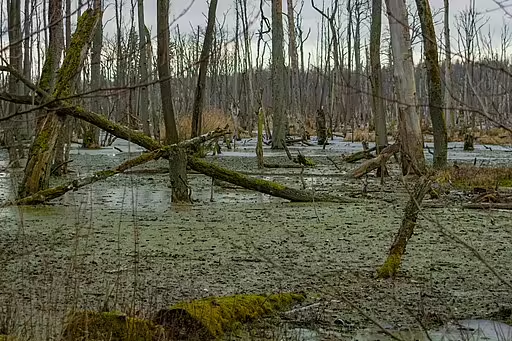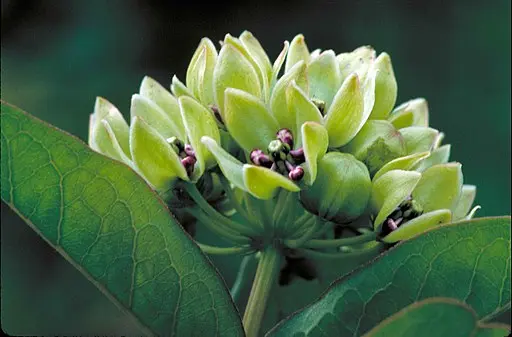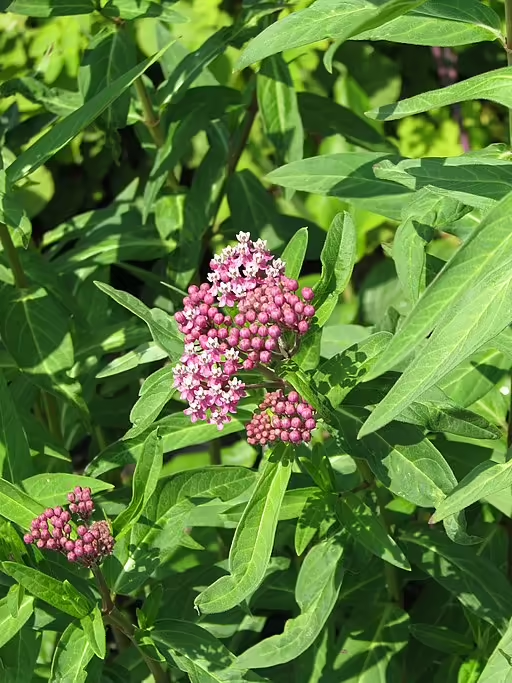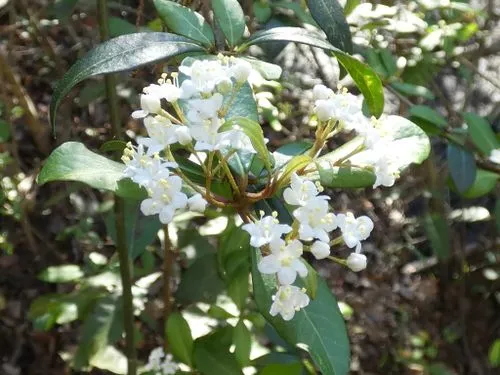Table of Contents for Nanny-Berry (Viburnum lentago)
Nanny-Berry (Viburnum lentago) is a shrub that is native to the north-central and northeastern United States and Canada. This species is a host to the holly blue (Celastrina argiolus), Spring Azure (Celastrina ladon), Henry’s elfin (Incisalia henrici) and the baltimore checkerspot (Euphydryas phaeton). Growing from 15 feet to 18 feet tall or up to 30 feet, this species grows in moist rich woods, streambanks, and swamps. The white to pink flowers bloom from May to June and the plant is hardy in zones 2-8.
Taxonomy and Naming of Nanny-Berry (Viburnum lentago)

Taxonomy
Nanny-Berry (Viburnum lentago) was originally named and described by Carl Linnaeus, in Species Plantarum in 1753. It has kept this same name since and is a member of the Muskroot Family (Adoxaceae).
Meaning of the Scientific and Common Names
Scientific Name
The genus name, Viburnum, derives from the Latin word for obscure or wayfaringtree. The species name, lentago, is a Latin name for “flexible” referring to the stems.
Common Name and Alternative Names
The common name comes from the fruits of the plant. Other common names include sweet viburnum, black haw, cowberry, tea-plant (Bergen 1896), partridge berry (McAtee 1942), sheep-berry (Bush 1895), and moosewood.
Physical Description

- Plant Type: This plant is a shrub to small-tree.
- Height: 15 ft (4.5 m) to 18 ft (5.5 m) or up to 30 ft (9.1 m) (Missouti Botanical Garden)
- Stem: The stems are erect with gray-brown bark.
- Leaves: The leaves are simple, opposite, cordate to ovate, and have serrate margins. They are 4 in (10 cm) to 10 in (25 cm) long and 3 in (8 cm) to 8 in (20 cm) wide (Weakley 2022).
- Flower color: white to cream
- Blooming period: This plant blooms from May to June.
- Fruiting type and period: This plant has black to blue drupes that mature in the summer to fall.
Range of Nanny-Berry in the United States and Canada

This Viburnum is native to the north-central and eastern United States and Canada. It is considered to be rare in the states of Delaware, Kentucky, Maryland, Missouri, Montana, Nebraska, and West Virginia and the provinces of New Brunswick and Saskatchewan in Canada.
Habitat

This species grows in rich woods that are moist, stream banks (King 1912), and swamps, roadsides (Arnold Arboretum 1919), wood edges (Mohlenbrock 1954), and thickets (McCormac and Schneider 1994).
Hosted Insects

This viburnum is a host to the holly blue (Celastrina argiolus), spring azure (Celastrina ladon), Henry’s elfin (Incisalia henrici), the Baltimore checkerspot (Euphydryas phaeton), and the scarce fritillary (Euphydryas maturna). A moth, the arrowwood sallow (Metaxaglaea inulta), is also hosted by this species (Schweitzer 1978).
Other Supported Wildlife

This species is a nectar source to other butterflies, skippers, bees (Stimec, et al 1997), and wasps during the growing season. The fruits are eaten and dispersed by birds, especially the tree sparrow (Baumgartner 1937).
Frequently Asked Questions
Does this plant have any ethnobotanical uses?
The Native American Ethobotanical Database shows that this species has been used for a number of pharmaceutical uses including a urinary aid, tuberculosis, and a diuretic. This plant is also edible and can be used for jellies.
How is this plant distinguished from other Viburnums?
This Nanny-Berry (Viburnum lentago) is similar to the Smooth Blackhaw (Viburnum prunifolium) and Rusty Blackhaw (Viburnum rufidulum), but differs from both in having strongly accuminate leaves (Weakley 2022).
Is this plant invasive?
This species has not been noted as being weedy.
Gardening with Nanny-Berry

Hardiness
This species is hardy in zones 2-8. If your garden is within these zones and you have the right growing conditions (soil, moisture and exposure), you may well be able to grow this plant. However, if planted outside of its range, the hosted species may not recognize the plant or be harmed by ingesting a different species with an unfamiliar chemical composition.
Optimal Conditions
This species requires part-shade to full sun and medium to moist well-drained soils.
References
- Arnold Arboretum. 1919. Viburnum lentago. Bulletin of Popular Information. 5(7): 28.
- Baumgartner, A. Marguerite. 1937. Food and Feeding Habits of the Tree Sparrow. The Wilson Bulletin 49(2): 65-80.
- Bergen, Fanny D. 1896. Popular American Plant-Names. IV. Botanical Gazette 22(6): 473-487.
- Bush, Benjamin Franklin. 1895. The trees, shrubs, and vines of Missouri. Annual report of the State Horticultural Society of Missouri 37: 353-393.
- King, Wilbur. 1912. The Flora of Northampton County, Pennsylvania. Torreya 12: 208-215.
- McAtee, W.L. 1942. Some Local Names of Plants. VIII. Torreya 42(6): 153-168.
- McCormac, J.S. and G.J. Schneider. 1994. Floristic Diversity of a Disturbed Western Ohio Fen. Rhodora 96: 327-353.
- Mohlenbrock, R.H. 1954. Some notes on the flora of Southern Illinois. Rhodora 56: 227-228.
- Schweitzer, Dale F. 1978. A Revision of the Genus Metaxaglaea (Lepidoptera: Noctuidae, Cuculliinae) with Descriptions of Two New Species. Postilla 178: 1-35.
- Stimec, Jennifer, Cynthia D. Scott-Dupre’, and John H. McAndrews. 1997. Honey Bee, Apis mellifera, pollen foraging in southern Ontario. The Canadian Field Naturalist 111: 454-456.
- Weakley, A.S. and Southeastern Flora Team. 2022. Flora of the southeastern United States. University of North Carolina Herbarium, North Carolina Botanical Garden.


